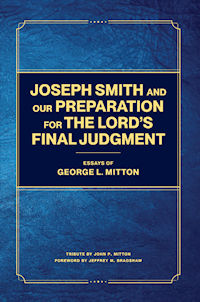Review of Jonathan Neville, A Man That Can Translate: Joseph Smith and the Nephite Interpreters. Salt Lake City: Digital Legends Press, 2020. 385 pages. $22.99 (paperback).
Abstract: This is the first of two papers that explore Jonathan Neville’s two latest books regarding the translation of the Book of Mormon. Neville has long argued that Joseph Smith did not use a seer stone during the translation of the Book of Mormon, and he has more recently expanded his historical revisionism to dismiss the multitude of historical sources that include the use of a seer stone. Neville’s “Demonstration Hypothesis” is explored in A Man That Can Translate, arguing that Joseph recited a memorized text from Isaiah rather than translate Isaiah from the Book of Mormon record. This hypothesis, meant to redefine how Joseph Smith used a seer stone during the translation of the Book of Mormon, however, fails to deal with the historical record seriously or faithfully. Neville, in a purported effort to save Joseph Smith’s character, ironically describes Joseph as a liar, reinvigorating old anti-Latter-day Saint claims that Joseph simply recited a memorized text, even to the point that Neville defends hostile sources while targeting Church-published histories and publications. He further attacks the witnesses of the translation in an effort to discredit their testimonies regarding the seer stone, and repeatedly misrepresents these sources. Coming from a Latter-day Saint, such claims are troubling and demand a response.
Continue reading →



 Welcome to Interpreter: A Journal of Latter-day Saint Faith and Scholarship, the peer-reviewed journal of The Interpreter Foundation, a nonprofit, independent, educational organization focused on the scriptures of The Church of Jesus Christ of Latter-day Saints. Non-print versions of our journal are available free of charge, with our goal to increase understanding of scripture. Our latest papers can be found below.
Welcome to Interpreter: A Journal of Latter-day Saint Faith and Scholarship, the peer-reviewed journal of The Interpreter Foundation, a nonprofit, independent, educational organization focused on the scriptures of The Church of Jesus Christ of Latter-day Saints. Non-print versions of our journal are available free of charge, with our goal to increase understanding of scripture. Our latest papers can be found below. 

